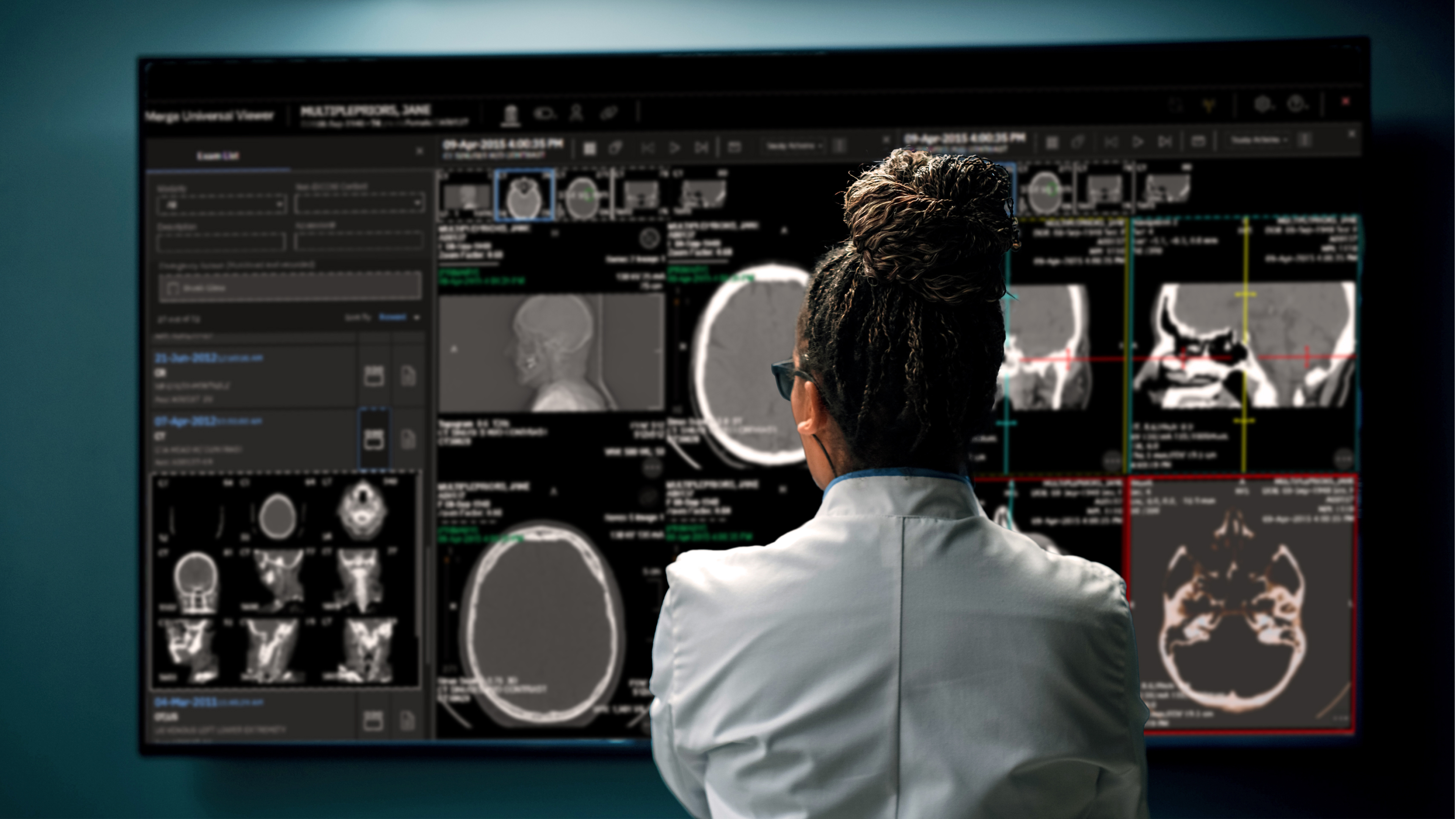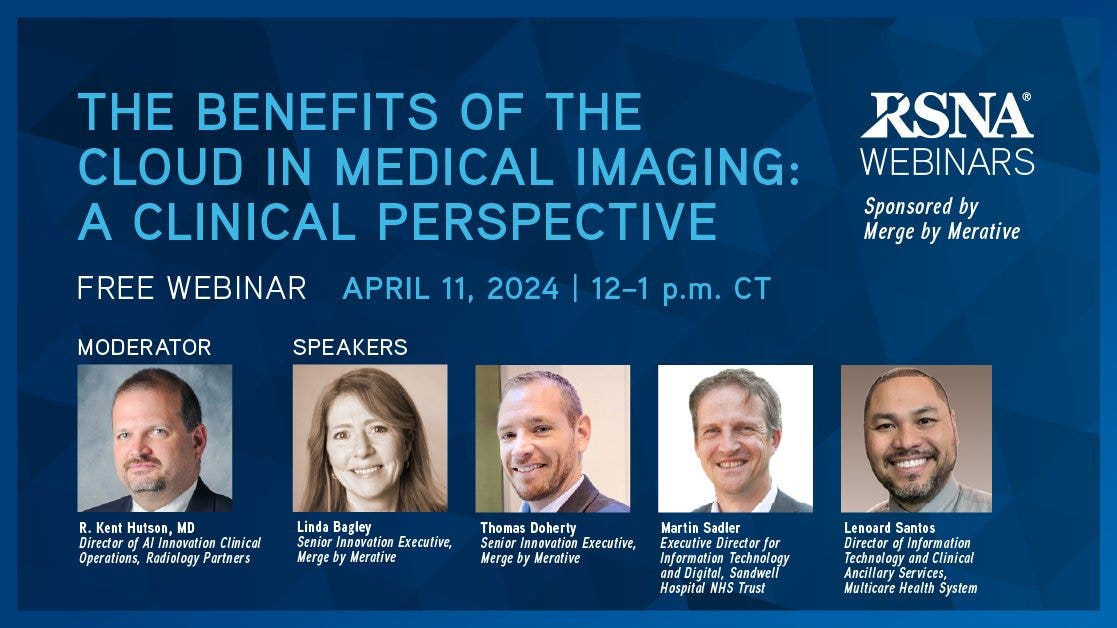A clinician’s POV: Workflow orchestration can revolutionize imaging
Reduce radiology burnout & save patient care. Discover intelligent teleradiology solutions that combat radiologist shortages with smarter workflows.

In today's fast-paced healthcare environment, we radiologists face pressure to read more studies at greater speed, without compromising diagnostic accuracy. This increasing workload, combined with the complexity of managing multiple worklists and systems, has contributed to rising stress, burnout, and attrition rates among imaging professionals.
But there is a way to streamline imaging workflows and get control over runaway worklists, so that radiologists like you and me can focus on what you (and your teams) do best – interpreting images and diagnosing patients.
That way is workflow orchestration.
As a practicing radiologist, I’m all too familiar with the day-to-day challenges of managing imaging caseloads, and the challenges of balancing those workloads with the dynamics of radiology departments. The healthcare workflow automation strategies we have used in the past can’t keep up. That’s why I’m excited about workflow orchestration and its approach to fundamentally improving how imaging departments operate.
What is workflow orchestration?
Workflow orchestration in medical imaging involves consolidating multiple worklists from systems across healthcare departments and locations into a single intelligent and productive experience. Call it a system, a platform, an intelligent worklist, a workflow solution, or an imaging workspace – it is all of these things: a complete workflow orchestration system.
This complete workflow orchestrator unifies imaging studies, patient data, and critical information (including study type, source, severity, status and expected completion, and more) from across multiple systems into one user interface. It is vendor neutral and integrates cleanly with any PACS, RIS, or EHR. Workflow orchestration provides a productive and intuitive user experience that offers the full complement of tools, automations, and transitions between workflow steps to reduce click fatigue for providers.
Workflow orchestration provides a workspace that radiology teams can rely on to do all their reading and reporting in a timely and easy way. Whether reading on-site or remotely, either on staff at a health system or as a provider of outsourced reading services, radiology professionals can manage caseloads and read studies faster and more productively.
Workflow orchestrator capabilities can help address a variety of challenges that plague imaging teams of every type, including:
Unified worklist
Instead of juggling multiple systems, radiologists can access all studies from a single interface. This dramatically reduces the time spent switching between PACS and RIS which don’t talk to each other, or between seats at different workstations in the reading room.
When the workflow orchestration solution is standards-based and vendor-agnostic, it can serve the helpful function of “layering” a unified worklist experience over existing systems. Underlying PACS and RIS systems can be disintermediated from the actual reading experience and workflow steps. This can help organizations manage underlying system upgrades or migrations more easily, by minimizing the physicians’ day-to-day.
Workspace personalization
Workflow orchestrators can help radiologists make their workspaces more productive by offering many options for sorting, stacking, and viewing the worklist, receiving reminders and notifications, helping with care team communications, or invoking a specific application or tool. This helps protect your concentration and focus so you can work faster and more accurately to complete exam reviews.
Intelligent routing
In time-sensitive cases, a workflow orchestrator makes all the difference for patient safety by automatically directing studies to the right reader. For example, a coronary CTA can be sent directly to a cardiac reader with no manual tasks for handoff. Stroke alerts or STAT head CTs that may be flagged by AI-powered applications can get prioritized routing to the neuro team and avoid inefficiencies and human error.
Equitable case distribution
With sophisticated solutions, advanced algorithms can automatically assign patient imaging cases based on factors like radiologist subspecialty, workload, and urgency of the study. In the case of Merge Workflow Orchestrator, this has shown to lead to a 34% more balanced distribution of workloads. The opportunity to optimize how cases are assigned can eliminate "cherry-picking" in healthcare organizations. This also helps to ease any tension or resentment amongst radiology team members around cherry-picking studies, which contribute to burnout.
Seamless integration
Workflow orchestrators integrate with EHRs, EMRs, and PACS to present relevant patient information and advanced insights directly within clinical workflows. No context switching with multiple logins and different UIs. No changing seats in the reading room to visit a standalone system.
Additionally, integrated AI insights show up as visual urgency tags for pulmonary embolism or brain hemorrhage. This help ensure timeliness for better patient care - even life-saving care. Integrated AI can also flag studies for the presence of potential lung nodules, and for perceived differences from prior mammograms, offering a level of data sharing that can help teams know what studies to focus on.
Enhanced collaboration
Workflow orchestration systems include secure, built-in communication tools accessible throughout workflow tasks, making it easier for you to consult with colleagues or discuss cases with referring physicians in real-time with less administrative burden and fewer interruptions. With better communication, those stakeholders have less reason to interrupt the flow of reading cases with phone calls.
Data-driven insights
By centralizing workflow data from across departments and locations, healthcare leaders can gain visibility into operational metrics and patterns, helping identify bottlenecks and opportunities for improvement in patient outcomes and physician experience. Patient-centered care becomes easier to achieve when the end-to-end process is better understood.
Real-world impact of radiology workflow orchestration
Workflow orchestration offers significant potential benefits that have real-world impacts on a radiologist’s day-to-day.
Your productivity can increase due to less time spent juggling worklists and faster access to relevant patient information. Unified worklists, together with priority alerts and SLA features, can lead to shorter report turnaround times for urgent studies.
As imaging technology continues to evolve, especially with the emergence of generative AI, we can expect to see even more advanced innovation with workflow orchestration.
- Predictive analytics: Systems may anticipate busy periods and suggest staffing adjustments in advance.
- Natural language processing: Improved voice recognition and NLP could further streamline reporting processes. NLP may also assist in locating and retrieving relevant patient data which may be buried in old or seemingly non-related medical records.
- Large language models (LLMs): Reporting may accelerate and become more accurate with enhancements that recognize and suggest relevant clinical terminology. This can help enhance insurance claims processing by ensuring the right terms correlate to the appropriate billing codes.
- Personalized workflows: Machine learning algorithms could adapt the interface and workflow steps to each physician's individual preferences and work patterns.
Takeaways
Workflow orchestration can offer a leap forward in efficiency and radiologists’ personal job satisfaction. By unifying disparate systems, automating routine tasks, and providing intelligent assistance, workflow orchestration allows imaging professionals like you to focus on delivering high-quality patient care at a lower personal cost.
As the healthcare landscape continues to evolve, embracing workflow orchestration will be a key strategy that medical imaging organizations can turn to for managing the growing demands and complexity of their patient studies. I look forward to sharing more thoughts, to help radiologists like you -- and your teams -- learn about the potential benefits that solutions like workflow orchestration can offer.
Ready to learn more about Merge’s solution for workflow orchestration? Merge Workflow Orchestrator was built by and for practicing radiologists to reimagine the imaging workspace. Discover how you can simplify your worklists with workflow orchestration, making clinicians, care teams, and the enterprise more efficient at reading, diagnosing, and reporting findings for the sake of better patient care.
Related Articles

Three ways AI can enhance radiology imaging workflows – right now
Some observations and proof points of how AI can help address the operational and...
By Raj Chopra | 7 min. read

Teleradiology 2.0: How intelligent design can save radiologists—and patient care
As imaging demand soars and radiologist shortages become more acute, smarter...
By Raj Chopra | 4 min. read

Cloud in medical imaging: 3 takeaways from RSNA webinar on the benefits to radiologists
Merge recently had the great privilege of participating in an RSNA webinar on the...
By Linda Bagley | 5 min. read
Ready for a consultation?
Our team is ready to answer your questions. Let's make smarter health ecosystems, together.
